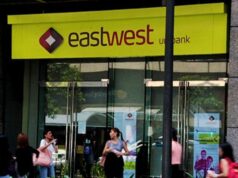Bigger rate cut could boost Philippine loan growth

By Aaron Michael C. Sy, Reporter
A LARGER 50-basis-point (bp) rate cut by the Bangko Sentral ng Pilipinas (BSP) could boost loan growth, enough to offset a potential decline in profitability, analysts said.
“Faster loan growth would help buffer some of the margin erosion in bank earnings brought about by declining rates,” Alfred Benjamin R. Garcia, Research head at AP Securities, Inc., said in a Viber message.
Finance Secretary Ralph G. Recto, who represents the government on the Monetary Board, has said they could afford to slash interest rates further and match the US Federal Reserve’s 50-bp rate cut.
“The Fed reduced by 50 bps. I think we can also do half a percent,” he a told a news briefing last week.
The BSP started its easing cycle on Aug. 15 with a 25-bp cut that brought its policy rate to 6.25%.
“Hopefully, it allows more consumer and corporate lending activity with lower borrowing costs,” Luis A. Limlingan, head of sales at Regina Capital Development Corp., said in a Viber message.
Mr. Garcia added that the 50-bp cut, coupled with the reserve requirement ratio (RRR) cut, could boost loan growth to the “mid-teens.”
The BSP has said it would cut the reserve requirement for universal and commercial banks and nonbank financial institutions with quasi-banking functions by 250 bps to 7%, effective Oct. 25.
It will also cut the RRR for digital banks by 200 bps to 4%, while the ratio for thrift lenders will be reduced by 100 bps to 1%. Rural and cooperative banks’ reserve ratios will likewise go down by 100 bps to 0%.
Meanwhile, outstanding loans of universal and commercial banks rose by 10.4% year on year to P12.14 trillion in July from P11 trillion a year ago. This was the fastest since 13.7% in December 2022.
Cristina S. Ulang, head of Research at First Metro Investment Corp., in a Viber message said a 50-bp cut could “dramatically lower the peso yield curve and help lower borrowing costs.”
The Philippine peso closed at P56.03 a dollar on Monday, 4.7 centavos stronger than its P56.077 close on Friday, Bankers Association of the Philippines data showed.
To date, the peso has weakened by P66 centavos from its P55.37 finish on Dec. 29, 2023.
Ms. Ulang added said reserve ratio cuts would lower the cost of bank reserves and funding costs.
However, Mr. Garcia noted that a 50-bp cut would be “unnecessarily aggressive,” and that he only expects a 25-bp cut in October.
“The BSP will likely rely on other monetary tools to boost liquidity and stimulate the economy, so as to allow the interest rate differential with the US to widen and strengthen the peso,” he added.



